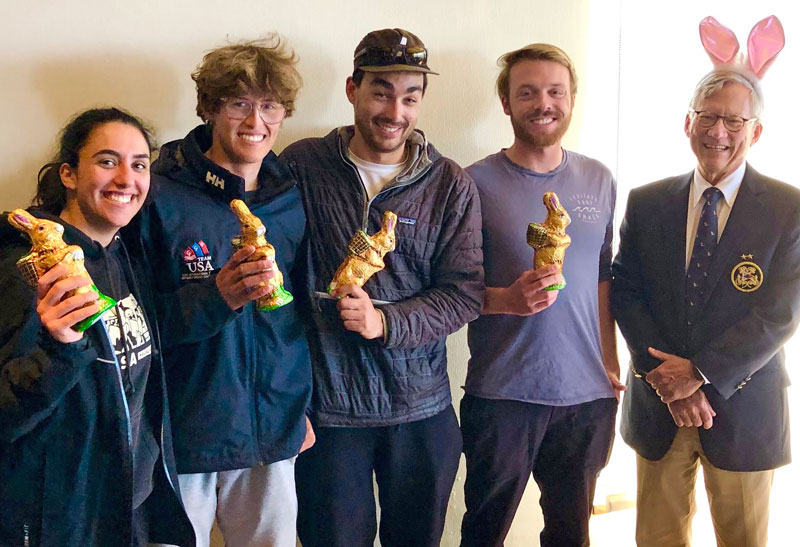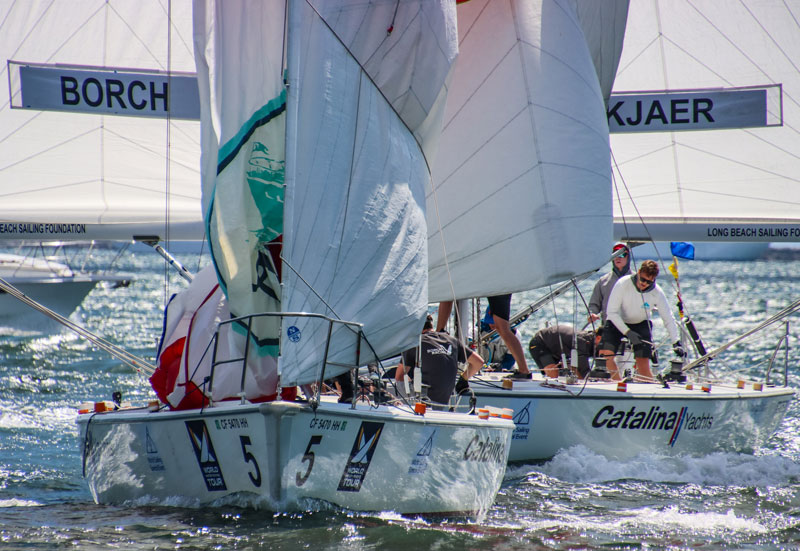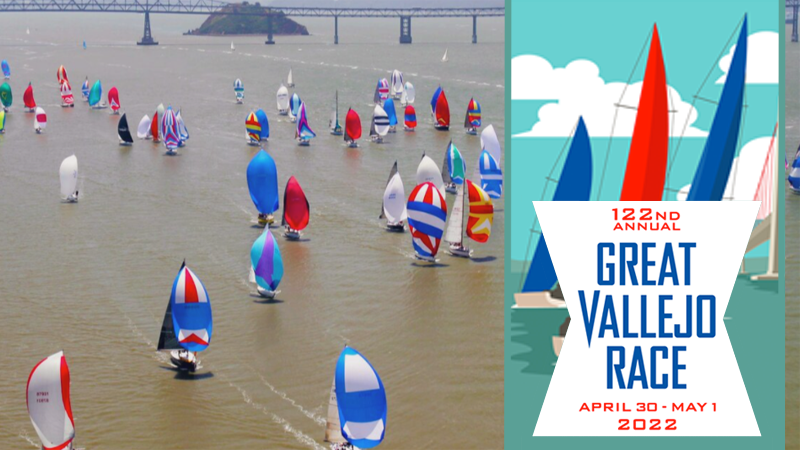
Plans Underway to Fully Dredge San Rafael Channel This Summer
If everything runs according to plan, San Rafael Channel could be fully dredged this summer — for the first time in 20 years. The creek channel, which harbors almost 2,000 boats, is a key part of San Rafael’s flood control defense system. The initial dredging plan was reported by the Marin Independent Journal in June 2021, at which time the channel was in some parts only two feet deep. Late last month the IJ reported, “After years of advocacy and effort by local business owners, residents and elected officials, the project received a $6.75 million allocation this month as part of the $1.5 trillion spending bill passed by Congress and signed by President Biden.”
The funding will allow the inner channel from the turning basin by Grand Avenue to Pickleweed Park to be dredged to a depth of six feet, and the outer channel running out to San Pablo Bay to be dredged to a depth of eight feet.

The City of San Rafael considers the channel urban waterfront that provides essential access to multiple individuals, businesses and services. The San Rafael police and fire departments operate three rescue boats on the channel, responding to over 1,380 water incidents within the last 15 years. The channel’s turning basin is a key firefighting defense location as a designated water pickup spot. And with the area at risk of flooding, seven stormwater pump stations discharge stormwater directly into the channel, relying on deep waters to keep the stormwater flowing into the Bay.
According to the IJ, the creek was last dredged in 2011, but only partially due to questions over the disposal of suspected contaminated soil on the channel’s western end. Last year the US Army Corps of Engineers used a $1.3 million federal funding allocation to take soil samples and plan and design this summer’s expected dredging project.
The Journal also reports that a further $700,000 grant has been allocated to study and design a bicycle path along one of the remaining “unprotected sections” of East Sir Francis Drake Boulevard near Larkspur.
If the long-awaited dredging takes place this summer, it will not only help ensure continuation of services vital to San Rafael, but also provide safer access to the Bay for the 2,000 boats that call the creek home.
A Girls’ Getaway in the Sea of Cortez
When my dear friend Kim Dumas, the founder of San Diego Women’s Sailing and yacht broker for Denison Yachting, first proposed the idea of an all-women’s catamaran sailing adventure in the Sea of Cortez last year, it took me all of two seconds to respond with an enthusiastic, “Yes! Let’s do it!”
As we all know, the spring and summer of 2021 were fraught with uncertainty. With the COVID-19 Delta variant on the rise, and much of the world still closed for travel, I think it’s safe to say that many people were going stir-crazy and needed an escape. Thankfully, a little slice of heaven north of Cabo San Lucas, on the Baja Peninsula in the Sea of Cortez, remained open for travel. La Paz is a popular cruising ground for sailors, and is known for its clear, turquoise water, white, sandy beaches, and the pristine archipelago of Espiritu Santo. Jacques Cousteau famously called the Sea of Cortez “the aquarium of the world” for its rich and abundant sea life.
Our goal was to create a fun, adventurous retreat where women could sail, swim, snorkel, SUP, hike, practice yoga, and make memories to last a lifetime. “I know so many women who enjoy sailing that would love an opportunity to refine their sailing skills in a non-competitive environment and can experience what cruising life is all about,” Kim explains. “Some of my favorite memories with my mom over the years are when we chartered boats together and went on sailing adventures.” It’s no surprise that Kim’s mom, Anne, was the first to sign up for the retreat for some precious mother/daughter time.

Kim and I knew the perfect platform for our sailing adventure: West Coast Multihulls’ Fountaine Pajot Saba 50, Balam, a beautiful six-cabin, six-head catamaran with a spacious galley and plenty of outdoor dining and lounge space.

Next up was securing our captain. Enter Annie Gardner. Annie is a 100-Ton USCG-licensed captain who spent 20 years teaching sailing and team building at the University of Denver. She has won 19 national titles and five world sailboat championships, and is the reigning women’s world champion on the Hobie 16. Kim knew of Annie when she was chosen to navigate on the America3 Women’s Team to compete for the 1995 America’s Cup, and knew her passion for sailing and experience as a liveaboard on her 47-ft Catana El Gato would be empowering and inspirational for the other ladies on board.
Kim reached out to her San Diego Women’s Sailing Group and filled the cabins for the October trip immediately. Due to the high demand, we created two additional Girls’ Getaway trips — one in November and one in December, which filled up as well. After getting to know everyone during our Meet the Crew planning session, I knew we were going to have an epic adventure.
Continue reading at Latitude38.com.
San Francisco on the Bay: Dock, Dine, Stay, Play
Trader Joe’s and Two Years Before the Mast
One thing we do like about Trader Joe’s, beyond great pricing on food, is the sailing imagery they utilize in their stores. The store’s roots in California are a reminder of the early trading days of sailing ships along the California coast. How did we make that leap? We’re rereading Two Years Before the Mast by Richard Henry Dana Jr., first published in 1840, about his two-year voyage from Boston around Cape Horn to California. We’d forgotten how beautifully it captured the early trading along the coast of California before it was a state and before there were harbors, breakwaters, marinas or any sort of facility to support the marine trades. Anchoring off San Diego, Dana Point, Santa Barbara, Monterey and San Francisco in 1835 was a raw experience for mariners, with a long row to a rough beach landing to conduct their primary trade in cowhides.
Fast forward almost 200 years, and the coast has been reshaped and the transfer chain of goods from ships offshore to the shelves of Trader Joe’s has been dramatically transformed. Richard Henry Dana Jr. was picking up cowhides, while we are looking for the perfect avocado.

The challenge of shopping at Trader Joe’s is all the plastic. A couple of years ago they made a huge commitment to reducing/eliminating the plastic from their stores, but we think the pandemic has slowed that down and made it worse at all stores. There’s a nice sailing drawing of clean, green sailing on the Bay right above their great “deals” on water in plastic bottles. Ugh.

If you’re a California sailor and you haven’t yet read Two Years Before the Mast, it’s a must-read. It’s also interesting to reflect on our current coastal trading as we pick our way through the plastic-packaged food with the sailing backdrop to remind us of how hard it is to change our collective course.
Match Racing Galore, California-Style
Bunny Bash on the San Francisco Cityfront
If you want to test someone’s mettle, ask them to match race J/22s in 18-22 knots and big ebb chop on the San Francisco Cityfront. That challenge was posed to the six teams entered in the Grade 5 Bunny Bash at St. Francis Yacht Club on Saturday, April 16. Those sailors certainly proved their mettle, impressing organizers, umpires and spectators with how well they battled one another and the elements.

Tor Svendsen, 17, and his crew, Will Paulsen, Noah Barrengos and Mimi El-Khazindar, defeated Sam White 2-0 in the finals. They had run the table 5-0 in the Stage 1 Round Robin. Humble about his talent on the helm, Svendsen claimed, “The key to my success was truthfully my crew. Having so much experience on board really made my job as a skipper much easier.”

The regatta attracted avid sailors from other areas of the sport to play hard at a new game, but in an event where the stakes were lower and the mode was fun-forward. Skippers Justin Turcotte, 14, from the Peninsula Youth Sailing Foundation and Arthur Serra, 16, of StFYC led other youthful teams. Serra relished the “high intensity and heart-pounding” action, requiring “full concentration from start to finish.”
Regatta co-chair Nicole Breault explained, “While in years past we have held clinegattas, this was the first straight-up entry-level match-race regatta we have run.” The Bunny Bash followed a six-week clinic series that Breault coached (9 of the 16 raced). She concluded, “I was super-proud of how they played the game in tough conditions.”
A growing number of Bay Area sailors of all ages are keen for more opportunities to engage in what Breault sometimes jokingly calls “combat sailing.” This energy could fuel more grassroots organizing of match-racing clinics, intraclub racing and grade 4 and 5 regattas. And perhaps someday in the not-too-distant future some of these budding match racers will aspire to advance to the top ranks of the world tour.
Click here for complete results.
Ficker Cup in Long Beach
Long Beach YC hosted the Ficker Cup April 14-16 in stadium-style match races using Catalina 37s. Jeppe Borch of Denmark won in a rousing upset over defending champion Emil Kjaer, also of Denmark. American Peter Holz and his Windy City Racing team took third and Dave Perry fourth in the World Match Racing Tour WS Grade 2 qualifier. The Ficker Cup enjoyed stiff breeze, though not quite as much as the Bunny Bash up north.

The top two finishers in the Ficker Cup qualify for the last two available spots in the Congressional Cup. Thus both Borch and Kjaer will join a top-notch international field of foes in the battle for the trophy and the Crimson Blazer.
Click here for complete results.
Congressional Cup Is Next
The 57th grade 1 Congo Cup will kick off with a rededication of the Congressional Cup Stadium. Long Beach mayor Robert Garcia will cut the ribbon at Belmont Veterans Memorial Pier tomorrow morning at 9 a.m. The Congressional Cup Stadium is where the 2028 Olympic sailing events will take place, situated directly off Belmont Pier between the oil islands White and Chaffee.
LBYC will host the Congo Cup this week, April 19-23. Spectators can watch the racing starting at 11:30 from Belmont Pier for free, with shaded stadium seating, food and drink vendors, and live commentary in a festive atmosphere. Visitors can also check out the new Congressional Cup Walk of Fame along the pier (Hollywood Blvd. style) featuring the names of past Congressional Cup champions.

In addition to the two Danes who advanced from the Ficker Cup, the skippers include Ian Williams (GBR), the second-ranked match racer in the world. Williams won Congo Cup in 2011, 2012, 2017 and 2019 before sitting out last year’s regatta due to travel restrictions. Taylor Canfield (USVI) is the winningest skipper in the regatta’s history, with victories in 2014, 2015, 2016, 2018 and 2021. Nick Egnot Johnson (NZL, ranked #3), Harry Price (AUS), Chris Poole of Connecticut, and Johnnie Berntsson (SWE; last year’s runner-up) return for another go. Pearson Potts, hailing from New Orleans, and Dave Hood of Long Beach YC are first-timers.
For complete info, see https://thecongressionalcup.com and www.wmrt.com.
Join the Great Vallejo Race — Registrations Open Now
April 30 – May 1, 2022
The first mention of a race came in 1925, when PICYA organized a cruise from Berkeley to Vallejo on a Saturday to be followed by a race back on Sunday. This is probably the official origin of the Great Vallejo Race, now reputed to be one of the largest inland regattas in the United States, usually drawing 200+ boats annually. Now under the aegis of the Yacht Racing Association (YRA) and hosted by the Vallejo Yacht Club, the two-day race marks the official opening of the San Francisco Bay racing season.
The race most often starts near the Berkeley Circle on Saturday morning, rounds a single weather mark near Alcatraz, and then heads to Vallejo, usually under spinnaker for the remainder of the race. The challenge is to maintain speed through the shadow of Angel Island, find the best combination of wind and current past the Richmond-San Rafael Bridge and East Brother Light Station, and then avoid the mud shoals on the east side of San Pablo Bay. Depending on the day, the passage can be a challenging breeze (intentional pun), or a miserable drifter, complicated—as always—by the current, no matter its direction.
As the boats enter Carquinez Strait, they bunch together, making the turn into Mare Island Strait. Because of the topography of Mare Island, as well as the fact that it sits at the mouth of the Napa River, local knowledge (or many years of sailing the race) can make the difference as the yachts maneuver toward the finish line on the Vallejo city waterfront. Winds vary from light to heavy and become exceedingly shifty. By the time they enter the strait, many of the crews are, let’s say, “over-relaxed” by sun, surf, and suds. This is where the fun really starts! In the mad dash for the finish line, sharp crews can usually pick off several places with close attention to trim, wind, and current. Just be sure to check your charts and keep a close watch on your depthsounder!


